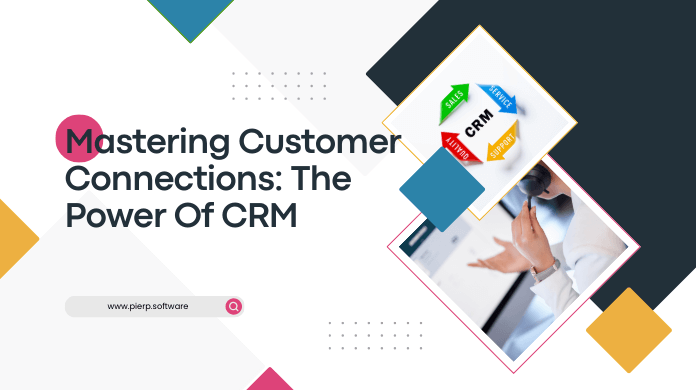In today's fiercely competitive business environment, establishing strong connections with customers is essential for sustainable growth and long-term success. Customer Relationship Management (CRM) stands out as a powerful tool in this pursuit. CRM involves the strategic use of processes and technologies to effectively manage and analyze customer interactions throughout their lifecycle.
It encompasses a range of activities such as sales automation, marketing automation, and customer service, all geared towards nurturing and enhancing customer relationships. Over time, CRM has undergone significant evolution. Initially centered on sales and contact management, modern CRM systems have evolved into comprehensive platforms that seamlessly integrate various functions and departments within organizations, offering a comprehensive view of customer interactions. This evolution underscores the critical role that CRM plays in driving profitability and fostering customer loyalty.
Benefits of CRM
- Enhanced Customer Relationships: CRM enables businesses to gather comprehensive information about their customers, including purchase history, preferences, and communication preferences. This data allows companies to tailor their interactions and offerings to meet the individual needs of each customer, fostering stronger and more meaningful relationships.
- Improved Customer Satisfaction: By understanding their customers better, businesses can provide personalized experiences and timely support, leading to higher levels of customer satisfaction. CRM systems also facilitate efficient communication, ensuring that customer inquiries and issues are addressed promptly and effectively.
- Increased Customer Retention and Loyalty: CRM helps businesses identify and prioritize their most valuable customers and develop targeted retention strategies. By consistently delivering exceptional experiences and anticipating their needs, companies can foster loyalty and encourage repeat purchases.
Key Features of CRM
- Customer Data Management: CRM centralizes customer data from various sources, such as sales, marketing, and customer service, into a single repository. This comprehensive view enables businesses to gain insights into customer behavior and preferences, facilitating more informed decision-making.
- Sales Automation: CRM automates repetitive sales tasks, such as lead scoring, opportunity tracking, and quote generation, allowing sales teams to focus on building relationships and closing deals more efficiently.
- Marketing Automation: CRM integrates with marketing platforms to automate campaigns, segment audiences, and track the effectiveness of marketing efforts. This automation streamlines marketing processes and ensures that messages are delivered to the right people at the right time.
- Customer Service and Support: CRM includes features for managing customer inquiries, complaints, and support tickets, ensuring that issues are resolved promptly and satisfactorily. Integration with communication channels such as email, phone, and chat enables seamless customer interactions across various touchpoints.
Implementing CRM Successfully for Mastering Customer Connections
- Define Objectives and Goals: Clearly define the objectives and goals you aim to achieve with CRM implementation. These could include improving customer satisfaction, increasing sales revenue, or enhancing efficiency in customer service.
- Assess Organizational Needs: Conduct a thorough assessment of your organization's needs and requirements. Identify pain points and areas where CRM can make a significant impact.
- Select the Right CRM Software: Research and evaluate different CRM software options to find the one that best aligns with your objectives, budget, and organizational structure. Consider factors such as scalability, customization options, and integration capabilities.
- Customization and Configuration: Customize the CRM software to meet your specific requirements. Configure settings, workflows, and user permissions to ensure smooth implementation and optimal performance.
- Data Migration: Plan and execute the migration of existing customer data into the CRM system. Ensure data integrity and accuracy throughout the process to avoid disruptions and inconsistencies.
- Training and Education: Provide comprehensive training and education to employees who will be using the CRM system. Ensure that they understand how to navigate the software effectively and leverage its features to their fullest potential.
- Change Management: Implement change management strategies to address any resistance or apprehension among employees. Communicate the benefits of CRM adoption and involve stakeholders in the decision-making process.
- Integration with Existing Systems: Integrate the CRM system with other existing systems and processes within your organization, such as ERP, marketing automation, and e-commerce platforms. Ensure seamless data flow and interoperability between different applications.
- Continuous Monitoring and Optimization: Monitor the performance and usage of the CRM system regularly. Track key performance indicators (KPIs) and metrics to evaluate the effectiveness of your CRM strategy. Identify areas for improvement and optimization based on data insights.
- Feedback and Iteration: Solicit feedback from users and stakeholders to identify pain points and areas for enhancement. Use this feedback to iterate and refine your CRM implementation continuously.
- Data Security and Compliance: Implement robust security measures to protect sensitive customer data stored in the CRM system. Ensure compliance with relevant data protection regulations, such as GDPR or CCPA, to maintain trust and credibility with customers.
- Executive Support and Leadership: Secure buy-in and support from senior management and executives for CRM implementation. Leadership involvement is crucial for driving adoption and fostering a culture of customer-centricity within the organization.
- Scalability and Future Growth: Choose a CRM solution that is scalable and adaptable to accommodate future growth and evolving business needs. Ensure that the CRM system can scale with your organization and support increased user volumes and data volumes.
- User Adoption and Engagement: Encourage user adoption and engagement by highlighting the benefits of CRM and providing ongoing support and resources. Foster a culture of collaboration and accountability to maximize the value derived from the CRM system.
- Regular Reviews and Assessments: Conduct regular reviews and assessments of your CRM implementation to evaluate its effectiveness and identify areas for enhancement. Adjust your strategy and approach as needed to align with changing business priorities and market dynamics.
Challenges in CRM Implementation
- Resistance to Change: Some employees may be resistant to adopting new technologies or changing existing processes. Businesses must invest in change management initiatives to address concerns and ensure buy-in from all stakeholders.
- Data Security Concerns: CRM systems contain sensitive customer data, making data security a top priority. Businesses must implement robust security measures, such as encryption, access controls, and regular audits, to protect against data breaches and unauthorized access.
- Integration Issues: Integrating CRM with existing systems and processes can be complex and time-consuming. Businesses must carefully plan and execute integration projects to ensure seamless data flow and interoperability between different applications.
Best Practices in CRM for Mastering Customer Connection
- Customer-Centric Approach: Adopt a customer-centric approach by placing the customer at the center of your CRM strategy. Focus on understanding customer needs, preferences, and behaviors to tailor interactions and offerings accordingly.
- Personalization: Leverage CRM data to personalize customer interactions across various touchpoints. Customize communications, recommendations, and experiences based on individual preferences and past interactions to enhance engagement and satisfaction.
- Integration with Other Systems: Integrate CRM with other business systems, such as ERP, marketing automation, and e-commerce platforms, to create a unified view of customer data and streamline processes. Seamless integration enables better coordination and communication between departments, leading to enhanced efficiency and effectiveness.
- Regular Updates and Maintenance: Stay up-to-date with the latest CRM features and enhancements by regularly updating the system and performing routine maintenance tasks. Ensure data accuracy, system performance, and security by conducting regular audits and maintenance activities.
- Training and Education: Provide comprehensive training and education to employees on CRM usage and best practices. Ensure that users understand how to leverage CRM functionalities effectively to maximize productivity and achieve business goals.
- Feedback and Improvement: Solicit feedback from users and customers to identify areas for improvement and innovation. Use this feedback to continuously refine and enhance the CRM strategy and implementation, ensuring alignment with evolving customer needs and market trends.
- Segmentation and Targeting: Utilize CRM segmentation capabilities to divide customers into distinct groups based on characteristics such as demographics, behavior, and preferences. Target specific segments with tailored marketing campaigns, promotions, and offers to maximize relevance and impact.
- Omnichannel CommunicationOmnichannel Communication: Embrace an omnichannel approach to customer communication, providing consistent and seamless experiences across various channels such as email, social media, phone, and chat. Ensure that customers can interact with your brand seamlessly regardless of the channel they choose, fostering convenience and satisfaction.
- Data Analytics and Insights: Leverage CRM analytics and reporting capabilities to gain actionable insights into customer behavior, trends, and patterns. Use these insights to identify opportunities for optimization, anticipate customer needs, and make informed business decisions.
- Customer Feedback Management: Implement robust customer feedback management processes within CRM to capture, analyze, and act upon customer feedback effectively. Use feedback to identify areas for improvement, address customer concerns, and enhance overall satisfaction.
- Automation and Workflow Optimization: Automate repetitive tasks and streamline workflows within CRM to improve efficiency and productivity. Use automation to trigger personalized communications, follow-ups, and reminders, enabling smoother customer interactions and relationship management.
- Continuous Monitoring and Optimization: Continuously monitor and evaluate CRM performance against predefined KPIs and metrics. Identify bottlenecks, inefficiencies, and areas for optimization, and implement corrective measures to ensure ongoing improvement and alignment with business objectives.
Final Words
In conclusion, mastering customer connections through CRM is essential for businesses looking to thrive in today's competitive marketplace. By leveraging the power of CRM to build and nurture relationships with their customers, companies can drive increased satisfaction, loyalty, and profitability. However, successful CRM implementation requires careful planning, effective training, and ongoing monitoring and optimization. By following best practices and embracing emerging trends, businesses can unlock the full potential of CRM and achieve sustainable growth and success.






